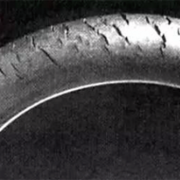How to prevent Caustic Cracking?
In the last article, we introduced what is caustic cracking, the type of caustic cracking and the harm of caustic cracking. Today here we will continue to describe how to prevent caustic cracking corrosion.
Choosing the carbon steel material
Carbon steel equipment can be used to hold caustic soda at room temperature, considering the terms of strength, plasticity and caustic cracking sensitivity. The 0.20%C killed carbon steel is most suitable for a caustic solution at a maximum temperature of 46℃. However, when the caustic soda temperature exceeds 46℃, post-weld heat treatment is necessary to avoid caustic cracking of high carbon steel weld. The addition of Ti and other alloying elements to carbon steel and heat treatment can also effectively inhibit caustic cracking. For example, the fracture time of carbon steel samples containing 0.73% Ti (mass fraction of C 0.105%) was extended from 150h to 1000h after being held at 650~750℃ and then cooled by the furnace. The upper limit of service temperature of carbon steel and low alloy steel in NaOH solution is shown in the table below.
| NaOH, % | 2 | 3 | 5 | 10 | 15 | 20 | 30 | 40 | 50 |
| Temperature limit,℃ | 82 | 82 | 82 | 81 | 76 | 71 | 59 | 53 | 47 |
Reducing Residual stress
Residual internal stresses, such as side misalignment, angular deformation and voids, should be minimized during fabrication and installation. The workpiece is often heated to a predetermined temperature and held long enough to reduce the residual stress to an acceptable level, that depending on time and temperature. Normally, cooling should be done at a slower rate to avoid new stresses. The stress relief annealing temperature of carbon steel and low alloy steel after welding shall not be lower than 620℃, and the holding time shall be calculated according to 1h / 25mm (thickness). Reasonable welds joints, reducing the number and length of welds as far as possible, weld short bead first and then long welds to reduce the residual stress. You can also choose reasonable assembly process and use reserved shrinkage margin or reverse deformation, rigid fixing method to prevent welding deformation.
You can take some measures to reduce the local unbalanced internal stress for the riveting structure, such as the uniform arrangement of riveting holes to avoid excessive riveting pressure, etc. The residual stress is the main factor that causes alkali brittleness. The welding process measures should be taken, such as low line energy, preheating before welding, proper welding sequence and direction, and inter-layer hammering, to reduce the residual stress of welded joints. The effective measures to prevent caustic cracking are heat treatment to eliminate stress after cold forming and welding structure manufacture.
Adding corrosion inhibitor
The commonly used corrosion inhibitors are Na3PO4, NaNO3, NaNO2, Na2SO4, etc., among which NaNO2 is very effective in preventing alkali embrittlement.
The dosage is determined according to the experimental results. For example, the ratio of NaNO3/NaOH to prevent alkali embrilling should be greater than 0.4, and that of Na2SO4/NaOH should be greater than 5.
Reduce service temperature
Keep the operating temperature below 46° C as low as possible, such as heating coils intermittently.
To prevent the concentrated
It is an effective measure to prevent caustic cracking to reduce or prevent local concentration increase or repeated evaporation and concentration of alkali during design.
Prepare in advance
Replace the material of main pipelines and equipment with 304 stainless steel to increase the temperature of caustic cracking and the temperature of fracture area. Reduce the steam tracing time as much as possible, and heat treatment of the main line and equipment before use to eliminate stress concentration and avoid caustic cracking.


Leave a Reply
Want to join the discussion?Feel free to contribute!